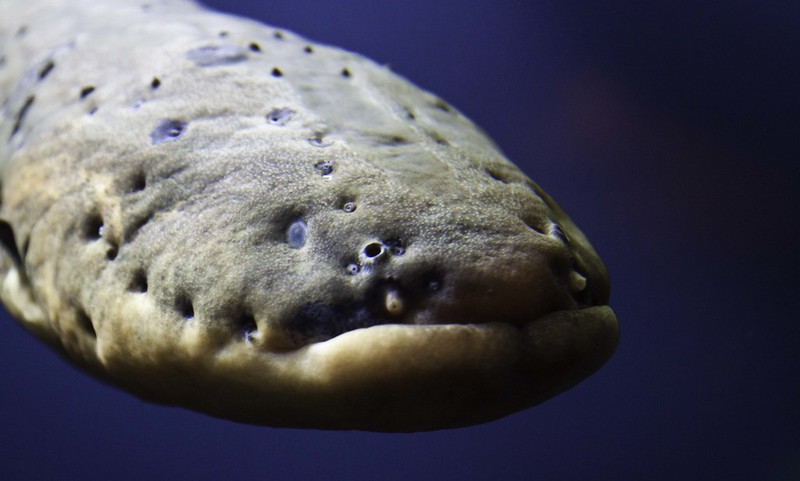Two New Species of Electric Eels With 860v Charge

Ready for a shock? Scientists have discovered two new species of electric eels in the Amazon basin. In 1769, Carl Linnaeus, a Swedish botanist and zoologist and inventor of Taxonomy, the science of identifying, naming and classifying organisms, identified the electric eel as Electrophorus electricus.
Since that time, scientists have assumed it was the only type of electric eel in existence, but recently Dr. David de Santana, a zoologist and fish biologist at the Smithsonian National Museum of Natural History has published a report detailing two new species and the similarities and differences.
Two new species of electric eel come as a shock to biologists (and yes, we are pleased with that headline) https://t.co/KbNpipoR2r pic.twitter.com/HLyOPdso3v
— New Scientist (@newscientist) September 12, 2019
Dr. de Santana and his team spent six years collecting different types of aquatic life in Greater Amazonia, the superbasin of the Orinoco and Amazon rivers and coastal drainage areas of the Guianas. According to Nature Communications, one hundred and seven were tested with the hypothesis that they may have evolved separately.
Physically they looked very similar with no outstanding evidence that they were different until DNA and the skulls were examined which showed three distinct species, Electrophorus electricus, the originally known species, Electrophorus varii, and Electrophorus voltai.
Electricus and varii’s voltage run on the average of six hundred and fifty volts while voltai was measured at an astounding eight hundred and sixty volts making it the strongest living bioelectricity generator according to Science Alert.
Electric eels are actually knifefish, and, although neuroscientist and fish biologist, Kate Allen from Johns Hopkins University, a private research university in Baltimore, Maryland, claims there are at least two hundred and fifty electric fish in South America, Electrophorus are the only ones who use their unique ability as a weapon and will actually jump at a predator to shock it, according to a Nova article on PBS.
Newly discovered species of electric eel delivers the most powerful shock yet – https://t.co/kd1fbp8985
— Science Connecting (@ScienceConnect2) September 13, 2019
These fish grow up to eight feet long and, according to Dr. de Santana, “If you can discover a new eight-foot-long fish after 250 years of scientific exploration, can you imagine what remains to be discovered in that region?”
Dr. de Santana’s research has determined that, about seven million years ago, there was two groups of eels, one that lived in the highlands and one that lived in the lowlands.
They diverged about three and a half million years ago when the Amazon River’s course was changed. The electricus stayed in the highlands of the Guianas where the water is clear and waterfalls and rock formations are plentiful while the voltai lives farther south in the same type of water, and the varii lives in muddy water in the lowlands.
Reported in New Scientist, Dr. de Santana explained that the voltai might have such large voltage because the water that is their home has fewer dissolved minerals.
That creates a situation of low conductivity and would require higher voltage to have an impact. Its voltage wouldn’t likely kill a human, but it would be quite painful and cause muscle contractions much like, or perhaps stronger, than a police taser.
Dr. de Santana has restricted collection of electric fish to himself as it would be too dangerous for students, especially in the dry season when eels congregate and discharge together.
His team is hoping to find enzymes and compounds that will prompt new discoveries in medicine or technology as did Alessandro Volta, a physicist and chemist from Como, Italy who invented the electric cell battery in 1800 after studying the Electrophorus.
Dr. de Santana expresses his dismay over the possible extinction of many species, both new and old, by commenting, “When a species becomes extinct, so does the health and safety of every human because these species are genetic warehouses that may have a cure for disease.”
Another Article From Us: Bigger Than 20,000 Football Pitches: Raft of Volcanic Rock Is Floating Towards Australia
The new Electrophorus varii species was named for the Smithsonian Institute’s Richard Peter Vari, one of the most important ichthyologists of the twentieth century and a member of Dr. de Santana’s team who died in January of 2016. The Electrophorus voltaic was named for Alessandro Volta.
